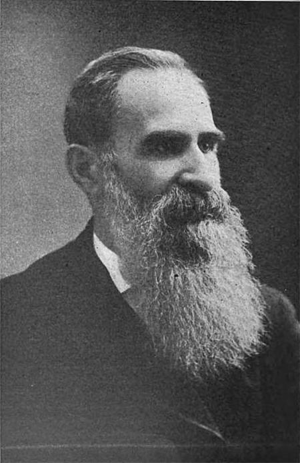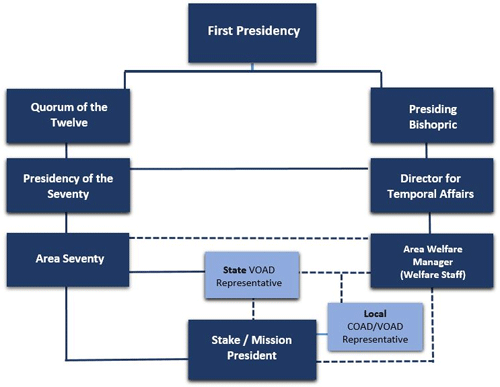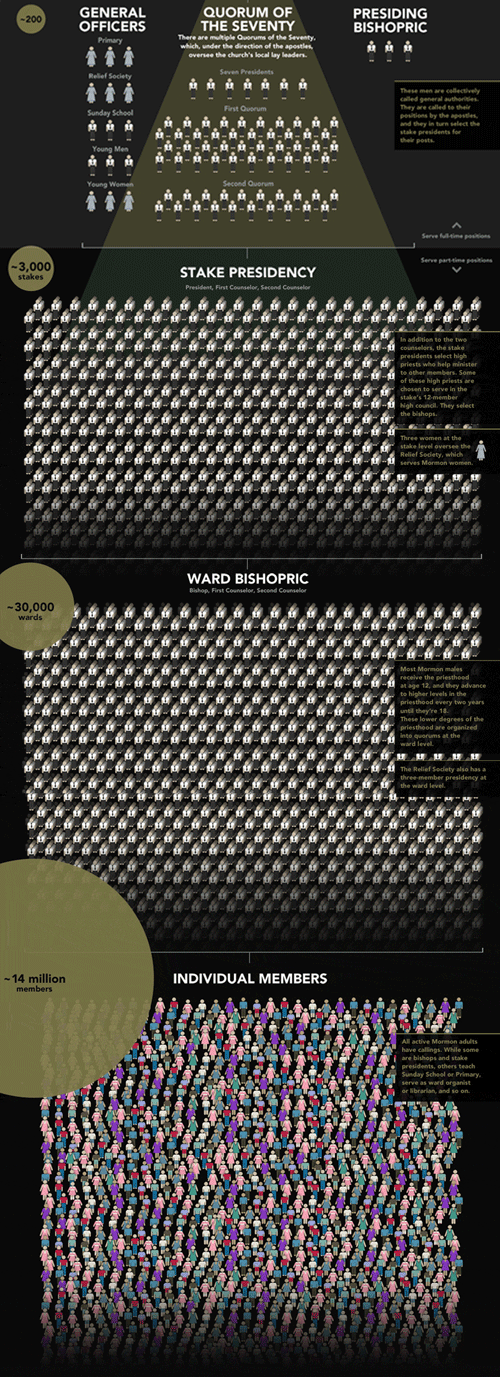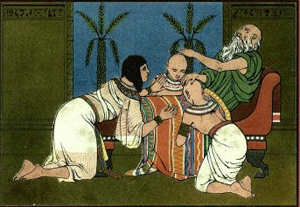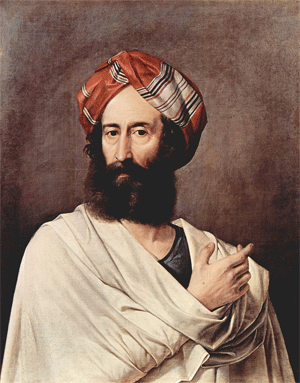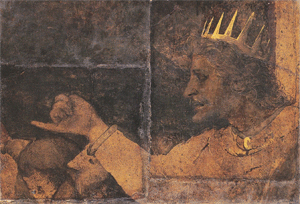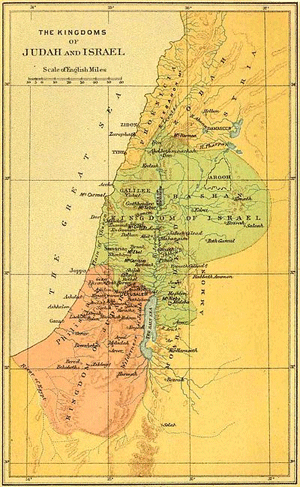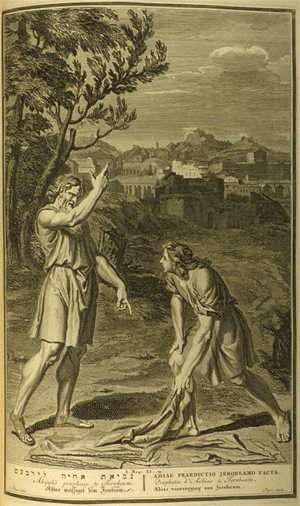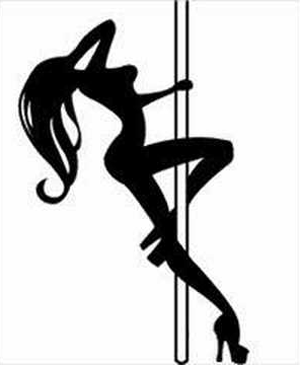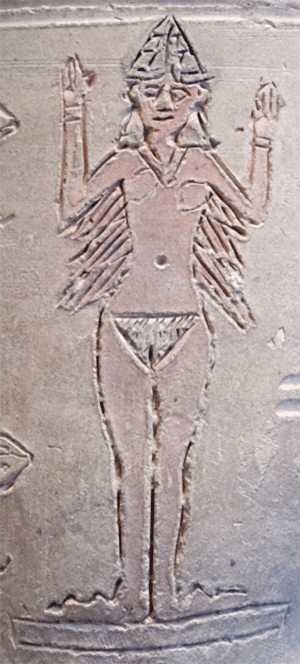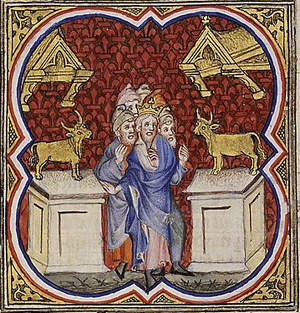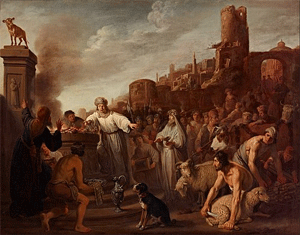by William G. Hartley
The Church of Jesus Christ of Latter Day Saints
LDS.org
Accessed: 7/18/18
NOTICE: THIS WORK MAY BE PROTECTED BY COPYRIGHT
YOU ARE REQUIRED TO READ THE COPYRIGHT NOTICE AT THIS LINK BEFORE YOU READ THE FOLLOWING WORK, THAT IS AVAILABLE SOLELY FOR PRIVATE STUDY, SCHOLARSHIP OR RESEARCH PURSUANT TO 17 U.S.C. SECTION 107 AND 108. IN THE EVENT THAT THE LIBRARY DETERMINES THAT UNLAWFUL COPYING OF THIS WORK HAS OCCURRED, THE LIBRARY HAS THE RIGHT TO BLOCK THE I.P. ADDRESS AT WHICH THE UNLAWFUL COPYING APPEARED TO HAVE OCCURRED. THANK YOU FOR RESPECTING THE RIGHTS OF COPYRIGHT OWNERS.
The old folks -- embraced the new faith immediately, and prepared for removal to Kirtland, Ohio, which was to be the nucleus of the new church, the "Zion" given by revelation to Joseph Smith as the gathering-place of the Saints....
Notwithstanding all that had taken place in Missouri, some of the more enthusiastic Saints believed that it was the promised land, and that some time they should come in and possess it. Indeed, that belief has prevailed among some of the older Mormons until within a very short time. Brigham has preached it and promised it; but now he says very little about it, and when he does he is wise to add, "if the Lord shall will it so." The present indications are, that the Lord will not "will it so," and all the Saints have contentedly accepted Utah as "Zion," in the face of "revelation." ...
Missionaries were sent to Europe, and converts flocked from thence to Zion. Never were missions crowned with greater success than those that were established in Europe by the Mormon Church. The elders went first to England, from there to Norway, Sweden, Denmark, Switzerland, France, and they even attempted Italy, but with so little success that the mission there was speedily abandoned. Indeed, the southern countries of Europe did not seem to have taken kindly to the new doctrine of the Saints, and evinced but slight interest in the establishment of a "spiritual kingdom on the earth," and paid no heed whatever to Joseph's revelations. But hundreds of converts were made among the English and Scandinavian people, and they all evinced a strong desire to "gather to Zion," and considered no sacrifice too great to be made to facilitate their emigration....
The first public announcement Joseph ever made of his belief in the plurality of wives was at Nauvoo, in 1840. In a sermon one Sunday he declared that it was perfectly right in the sight of the Lord for a man to have as many wives as he pleased, if he could evade the laws of the land. Said he: "People of polygamous nations will be converted to the church, and will desire to, gather with the Saints to Zion; and what will they do with their wives? We must have polygamy among us as an established institution, and then they can bring all their wives, with, them." ....
After three years of remunerative labor, during which time he had got his business fairly established, he concluded to leave it and join the Saints at Nauvoo; he and my mother both -- the latter more especially -- desiring to be once more in Zion with the "chosen people."...
How blessed the day when the lamb and the lion
Shall lie down together without any ire,
And Ephraim be crowned with his blessing in Zion,
As Jesus descends with his chariots of fire.
We'll sing and we'll shout, with the armies of heaven:
Hosanna! hosanna to God and the Lamb!
Let glory to them in the highest be given,
For ever and ever. Amen and Amen."...
It is a significant fact that most of the persons who thus perished were Gentiles, apostates, or people who, for some reason or other, were suspected by, or disagreeable to, Brigham Young; and it came presently to be noticed that if anyone became tired of Mormonism, or impatient of the increasing despotism of the leader, and returned to the East, or started to do so, he invariably was met by the Indians and killed before he had gone very far. The effect was to discourage apostasy, and there was no one but knew that the moment he announced his intention of leaving Zion and returning to "Babylon," he pronounced his death sentence....
[A]ny one who displeased the Prophet was "sent on a mission" as a punishment. Did the polygamous Prophet fancy a man's wife, he was sent to the farthest possible point from Zion, to "enlist" souls for the Mormon Church....
Seventy-five families were ordered to abandon their homes, and take their departure for a new and almost unknown portion of the Territory [Las Vegas]. They expended thousands of dollars in building, fencing, and every way beautifying and improving their new homes; and just as they were getting nicely settled, and had made their new homes habitable and comfortable, the Prophet pronounced it an utterly unsuitable place for a "Stake of Zion," and ordered them all back again; so that the years passed there, and all the expenditures, were a total loss....
The United States government was beginning to trouble itself a little about Utah; and in order to make the church as strong as possible, in case of an invasion, Brigham was anxious to increase the number of emigrants, and requested Apostle Richards to send as many as he possibly could. To do this, the elders counselled all the emigrants, who had more money than they needed, to deposit it with the Apostle Richards for the purpose of assisting the poor to Zion. The call was instantly and gladly obeyed, and the number of Saints bound Zion-ward was thereby nearly doubled. In the face of the disaster which attended it, it has been the boast of some of the missionaries and elders that this was the largest number that ever was sent over at one time. So much greater, then, is the weight of responsibility which rests upon the souls of those who originated and carried out this selfish design, made more selfish, more cruel, and more terribly culpable for the hypocrisy and deceit which attended it from its conception to its disastrous close....
When, after a while, the Apostle Taylor's imperative personal business allowed him a moment in which to think of the unhappy emigrants, he started them for Iowa City, where they arrived only to experience a repetition of their New York sufferings, and see another illustration of apostolic neglect. Nothing had been prepared for them either in the way of shanties or tents, and they were compelled to camp in the open air, their only roof a sky that was not always blue. While in camp, there were several very severe rain-storms, from which, as they had no shelter, there was no escape; they got completely drenched, and this caused a great deal of severe illness among them. They were unprotected alike from burning sun and pitiless, chilling rain, and it is no wonder that fevers and dysentery prevailed, and that hundreds of longing eyes closed in death before they beheld the Zion of their hopes. It would have been strange if the faith of some had not wavered then; yet none dared complain. There was nothing to do but to go on to the end. They were thousands of miles from home, with no means of returning, and they were taught, too, that it would be a curse upon them to turn their backs on Zion. So there they remained through the long summer days, waiting helplessly until they should be ordered to move onward....
When the relief train reached Captain Willie's company, they were camped on the Sweetwater, near the Rocky Ridges. They had eaten their last provisions, and death was staring them pitilessly in the face. The camp was filled with dead and dying. There was no help for the latter, and the poor souls had lost all desire to live. They were waiting, with almost apathetic indifference, for release, while those dearest to them were doubly agonized because they must see the loved ones perish, and they were helpless even to bring comforts to them, or make life easier while it lasted. Those who were strong enough, dug one large grave in which all the dead were laid together. It was the best they could do; but their hands were no less tender and loving, their hearts no less sore, than if the last rites had been as imposing as those of royalty itself. The only thing they could do to prepare their dear ones for the grave was to close the eyes, the loving eyes that, to the very last, had turned longingly Zion-ward; to fold the pulseless hands over the silent hearts that, through all the hardships and toil, had kept their trust firm and their faith bright; to straighten out the tired feet that, bleeding and sore, had yet toiled joyfully along the rugged path that led to the fair Canaan of their dreams; to smooth the tangled hair away from haggard faces, where the lines of care lay heavily, and yet through which the light of peace divine shone serene and pure; to arrange as decently as possible the tattered garments, which were their only clothing for the tomb, and to lay them, coffinless, in their cold bed in the Rocky Mountains, in their last, long sleep; then to go away and leave them there, with the relentless winter storms beating upon them, and no stone to mark their resting-place. The road from Winter-Quarters to Salt Lake was a via dolorosa indeed....
Among the emigrants was a very wealthy gentleman of the name of Tennant. He and his wife were among the early converts, and were very earnest Mormons. They had for a long time been resolved to come to Zion, and when the Hand-Cart scheme was introduced they decided to join that company. Humble followers of Christ, they thought they could in no better way show their love for Him and their devotion to their religion, than by such an act of self-sacrifice as this. Possessed of ample means to have crossed the ocean and travelled in the most comfortable and even luxurious manner, they nevertheless chose to go in this way, with the poorest of the Saints, and share with them all the hardships and dangers which should attend this toilsome, perilous journey.
Mr. Tennant gave liberally to the emigration fund, in order that as many poor Saints as possible might make the long-anticipated pilgrimage to Zion, and both himself and his wife provided liberally for the comfort of their poor fellow-travellers. A short time before the emigrant company left England, the Apostle Richards, in one of his eloquent dissertations on the "plan" and its divine origin, said that in order to assist the poor to emigrate, President Young had given to the Emigration Fund Society an estate in Salt Lake City, to be sold for its benefit. He dilated largely upon the disinterested generosity of the Prophet, and his desire that as many as possible of his faithful followers should be gathered to Zion during that season. Fired by this act of extreme kindness on the part of his revered leader in the church, Mr. Tennant at once bought the property, and paid, it is said, thirty thousand dollars down for it. There is little need, perhaps, of saying that that was immensely more than its real value; but that fact its purchaser was not aware of, as it was glorified by all the apostolic eloquence bestowed upon it, quite beyond recognition.
On the voyage and during the journey across the States, and the tiresome waiting time at Iowa City, no one was more beloved than Mr. Tennant and his gentle, estimable wife. Sharing alike with the poorer Saints, no word of complaint ever passed their lips. They never for a moment seemed to regret their decision to emigrate at this particular time, but accepted every fresh hardship as a trial to their faith, sent by God Himself to test them, and prove their worthiness to enter His glorious kingdom on earth. They moved among their companions with kindly faces and words of cheer and comfort. They encouraged endurance by their example, and made the forced discomforts of some of the party seem easier to bear by their voluntary assumption of them. As far as they could they alleviated the distress which prevailed, and were always ready to perform any deeds of kindness.
The journey with the hand-carts was doubly hard for them, unused as they were to exertion; and day after day the wife saw the husband slowly succumbing to fatigue and disease, and she powerless to assist him. But, though his strength waned and his health failed him, yet his courage and his faith remained steadfast and fixed. Whatever came he believed would surely be right, and though he struggled manfully to keep up until he should reach Zion, yet he was overcome, and died at O'Fallon's Bluffs, literally of exhaustion. His last thought was for his sorrowing wife, and his last word was of comfort and consolation to her. He had one thought to make the parting easier -- he had provided a home for her in Zion; Brother Brigham held it in trust for her, and she would find the comforts to which she was used, and rest and peace in the Valley with the chosen people.
The bereaved wife clung wildly to her husband's remains, with the most heart-broken lamentations. To have him die was a misery in itself; but to see the slow, cruel torture which he underwent, and to watch him slowly dying such a horrible death, was almost unbearable. For a time it seemed almost as though she must be left there with him; that her soul would follow his. Happier would it have been for her had that fate been hers. The cold earth and pitiless winter storms would not be so cold and so pitiless as the world was to her, after this loving protecting arm was taken from her. A woman, unused to toil and hardship, nurtured in luxury, reared in tenderness and love, she was left alone to battle single-handed with the world. And such a world! whose ruling passion was avarice, and whose delight was another's torture; the world of Mormon Sainthood — ruled over by a grasping, lecherous, heartless tyrant, who laughed at a woman's sorrows and flouted at her wrongs. I think if she had known all that was to follow, she would have lain down on the plain by the side of her dead husband, and endured the torture of a horrible, slow death, rather than have gone on to the years of suffering which lay before her.
It is fortunate, indeed, that the future is so closely veiled to us; else we should all lose heart and courage in this unequal struggle called life, and lay down our weapons, convinced that it is of no use to struggle longer. Providence deals wisely with us, after all, and we are forced to admit it at every step of our lives.
The hurried funeral rites were over, and the man who had been so great a benefactor to the people among whom he had cast his lot, was left sleeping his last sleep in a strange land, and the sorrowing party resumed their weary way, saddened by this affliction. On the arrival at Salt Lake Mrs. Tennant at once proceeded to look after her property. The "magnificent estate" for which her husband had paid so fabulous a price, was a small wooden house, inconvenient and out of repair, and worth not a tenth part of what had been paid for it.
She was shocked and troubled at what seemed such a piece of swindling on the part of the President and the church authorities, although at first she was inclined to exonerate Brigham Young and blame Apostle Richards for misrepresentation; but an audience with Brigham soon convinced her that he was at the bottom of the whole affair, and she felt bitterly enough towards the man who, under the guise of religious benevolence, would be guilty of such a piece of trickery. Even this poor shelter was not left her very long. The place, and, indeed, most of the valuable things which her husband had sent to make their home in Zion more comfortable, were taken for tithing and on other pretences, and in a very few months this woman was compelled to go out to daily labor to earn her bread, her rightful property going to fill the already overflowing coffers of the "Prophet of the Lord." Indeed, the entire Hand-Cart expedition was a good speculation for the President, and helped replenish the prophetic pocket....
After Howard was well out of the way (in England, I think), Brigham started the distillery again in the "church's" interest, which, as he represents the church, meant himself. And over the door he placed as a sign the All-seeing eye, with the inscription, "HOLINESS TO THE LORD. ZION'S CO-OPERATIVE MERCANTILE INSTITUTION. WHOLESALE LIQUOR-DEALERS AND RECTIFIERS."...
He [Brigham Young] is met outside of every settlement which he visits by a company of cavalry; and a little farther on, just outside the entrance to the town, he is met by another procession,— sometimes of the children alone, but oftener, in the large settlements, where they are ambitious to "do the thing up in shape," of the entire population who are able to turn out, men, women, and children, headed by a brass band, all ranged along to give greeting to the Prophet. They are arranged in different sections, each section having its appropriate banner. The elderly and middle-aged men are all together under the banner "Fathers in Israel." The women of the same ages are ranged under their banner, Mothers in Israel." The young men are proud enough of the inscription which theirs carries, "Defenders of Zion;" and the young girls are fresh and lovely under their banner, "The Daughters of Zion, —Virtue;" while the little wee bits, that are placed last of all, are "The Hope of Israel." Other banners bear the inscriptions, "Hail to the Prophet;" "Welcome to our President;" "God bless Brigham Young;" "The Lion of the Lord;" and others of a similar nature are seen along the line of the procession....
He is as eloquent now, when talking on the subject of giving, with this exception in his style of address, that he now demands instead of asks, and it is disastrous to refuse him. He begs for the missionaries, and the poor men never get a cent of the thousands of dollars that are raised for them. He begs for the Temple, which is his pet subject, whenever there is nothing else to beg for, and the amount of money which he has raised for the building ought to have erected several very imposing edifices.
Many years ago he levied contributions upon the English Saints for the purchase of glass for the Temple windows. The sum desired must be collected at once. The Lord was soon coming to enter upon his earthly kingdom, and the place must be prepared for him. Missionaries preached, and laymen exhorted; they astonished even themselves by their eloquence, as they dwelt upon the beauty of Zion, the city of the Lord, and the glory that was to descend upon his chosen people. Those who were not moved by their oratory were impelled by their command; but, for the most part, the money was given voluntarily. Working men and women took a few pennies from their scant wages, and gave them with wonderful readiness, and then suffered from cold and absolute hunger for days after. But they suffered with painful joyousness and devotion, since they were giving it to the Lord, who had chosen them out of all the world for his very own people, and who would make their self-denials here redound to their glory and grace when at last they should arrive in his presence.
At that time, the foundation walls of the Temple were barely above the ground, and the work has progressed very slowly since. At any rate, the glass has not been bought, and there seems very little probability of window material being needed at present; and if the Lord is not to visit the Saints until his home is completed, even the younger members of the present generation will not be likely to see Him....
Brigham is shrewd enough to see that "revelation" is not one of his strong points, and he rarely attempts it; less frequently now than formerly, even. The catch-words, "Thus saith the Lord," are not nearly so potent as they were before the Saints came so much in contact with the Gentile world, and unconsciously lost some of their superstition. They do not openly laugh at Brigham's prophecies, but a few of the more honest and far-seeing venture to criticise him very quietly, although they submit to his rule, and are seemingly as good Saints as ever. They are not ready to apostatize; their interests and associations bind them to the church, and they do not wish to leave it. Some cling to it, like George Q. Cannon, through ambition; for that young apostle dares to cast his eyes toward Brigham's position, and has expressed the belief that he might ultimately succeed him. Others, like Orson Pratt, are so closely identified with it, that they cannot and would not cut themselves adrift from it. The church is their life, and they will only leave one when they are compelled to give up the other. Another class, to which Brigham's sons notably belong, stay because their pecuniary interests demand it. It "pays" to be a Mormon. But when once the present ruler is taken, they will have nothing to hold them, and they will do openly what they have long since done in their hearts, repudiate Mormonism, and all its superstitions and practices. And I am morally certain that the first one to take advantage of his newly-obtained liberty will be John W. Young, who is even now known as "the Prophet's Apostate Son," and who yet, in spite of his apostasy, holds the position of "President of the Salt Lake State of Zion," with the rank of bishop.
-- Wife No. 19, the Story of a Life in Bondage, Being a Complete Expose of Mormonism and Revealing the Sorrows, Sacrifices and Sufferings of Women in Polygamy, by Ann Eliza Young, Brigham Young's Apostate Wife
More than 80,000 converts came from Europe between 1840 and 1900 in what one historian called “the largest and most successful group immigration in United States history.”1 In addition, other thousands in this century have come on their own from all over the world to make their homes among the Saints.
During the 19th century, “gathering” to Zion was the second step after conversion. The phrase comes from a revelation given shortly after the Church was organized in 1830 to New York members:
“Ye are called to bring to pass the gathering of mine elect; for mine elect hear my voice. …
“Wherefore the decree hath gone forth from the Father that they shall be gathered in unto one place upon the face of this land.” (D&C 29:7–8.)
At Kirtland five years later, Joseph Smith received from Moses “the keys of the gathering of Israel from the four parts of the earth.” (D&C 110:11.)
Converts first gathered from the United States and Canada, following Church headquarters successively from Ohio to Missouri to Illinois. To Nauvoo in 1840 came the first overseas converts from the newly opened mission field in England, and six years later nearly 4,000 British immigrants were part of the Latter-day Saint exodus from Illinois. Once relocated in the far west, the Church encouraged and assisted large-scale immigration.
The gathering had two major purposes. First, Zion needed to be built up. Repeatedly persecuted and driven, the Church needed a strong, permanent base with a strong population to occupy the territory and make it economically self-sufficient. Also, the pure in heart needed a place of refuge from persecution and sin. “Zion,” however, could not be equated with an easy life. As a contemporary hymn taught:
“Think not when you gather to Zion,
Your troubles and trials are through,
That nothing but comfort and pleasure
Are waiting in Zion for you:
No, no, ‘tis designed as a furnace,
All substance, all textures to try,
To burn all the ‘wood, hay, and stubble,’
The gold from the dross purify.”
(Hymns, no. 21)
By 1847, a decade after missionaries first preached the gospel in England, 250 branches and 30,000 members functioned there, more members than there were in the Salt Lake Valley. Within another decade thousands of converts joined the Church throughout Europe, particularly in Scandinavia after 1850, and the spirit of gathering also touched Utah Saints to assist those who desired to come.
Of central importance was the Perpetual Emigration Fund, sometimes called the “Poor Fund.” Established at first to help Nauvoo exiles move to Utah, it became a revolving fund raised in Utah and Europe by donations of money and goods to finance part or all of the immigrants’ journey. “We expect,” wrote Brigham Young in 1849, “that all who are benefited by its [Fund] operations will be willing to reimburse that amount as soon as they are able.”2 Such repayments would fund the next immigrants.
Due to fund limitations, leaders usually selected those on whose behalf Utah relatives had made donations, converts with needed skills, or converts of ten years or more. Peak usage of P.E.F. funds and equipment came in the mid-1850s when one out of every three immigrants was fully subsidized by the Church. Although the loan monies were exhausted by 1857, the P.E.F. Company continued to provide purchasing and organizational benefits until it was dissolved by Congress in 1887.
Thousands found other means to finance their migrations. Many received help from relatives and friends. Anders Eliason, a well-to-do Swedish landowner, helped send 100 immigrants. Others made the journey to Zion in two laps, stopping along the way to earn money. Also, Utah settlements and European branches raised special immigration funds; Utah contributed $70,000 in 1868. Despite Church programs and donations, however, many Saints had to wait—sometimes 15 to 25 years—before finding means to gather to Zion.
U.S. historian H. H. Bancroft stresses the difficulty of reaching pre-railroad Utah: “Excepting perhaps some parts of Soudan,” he wrote, “there were … few places in the world more difficult to reach than the valley of the Great Salt Lake.”3 For immigrants, the journey across ocean, plains, and mountains totaled 5,000 miles. But thanks to Church organizational skills and resources, most immigrants avoided many hardships and mistakes that usually plagued inexperienced travelers.
Liverpool, England, served as departure point for Latter-day Saint British and European immigrants (75 percent of whom traveled as families—unlike general European immigration). There, Church agents chartered ships, in whole or part, for the long Atlantic voyage and purchased tinware, wagon cover and tent materials, and other necessary provisions. Once aboard ship, the immigrant companies, ranging in size from a dozen to 800 souls, were organized into wards. Eight hundred emigrants aboard the William Tapscott in 1862, for example, were divided into 19 wards. Often, nationality wards were formed: the Nevada in 1872 had one British and six Scandinavian wards. The 700 Saints aboard the S.S. Wisconsin in 1877 spoke eight languages among them.4 Supervising the Latter-day Saint companies were presiding elders, experienced travelers who were typically missionaries returning to Utah.
The Saints employed their time sewing together tent and wagon covers, teaching schools for children and adults—English classes were popular for continental Saints—and hearing lectures on such subjects as astronomy and agricultural improvements. Although most voyages produced a marriage or two, aboard the William Tapscott in 1849 there were 19: five English, one Swiss, and 13 Scandinavian.
Church meetings kept the spirits up. Sabbath and weeknight meetings frequently attracted nonmember passengers and crewmen, resulting in some interesting baptisms in barrels or over the side from platforms.5
Until 1854, the ships docked at New Orleans where Latter-day Saint immigration agents helped the travelers book passage on steamboats that took them upriver to St. Louis, Missouri. From there Church wagons transported the foreigners to outfitting points in Iowa and Missouri. After 1854, to avoid river diseases, Latter-day Saint companies from Liverpool docked at Boston, New York, or Philadelphia, where Church agents arranged for railroads to take the immigrants to frontier outfitting points. Following the Civil War, steamships cut the trans-Atlantic crossing time to ten days from five or six weeks for a sailing ship.
At outfitting camps on the plains, the travelers found their teams, purchased by Church agents, ready to receive them and their luggage. Often ten people shared one wagon and one tent. The wagons—the covers of which, like the tents, were sewn of English twilled cotton en route at sea—came supplied with flour, sugar, bacon, dried fruit, and other necessities.
Compared to other plains traffic, Latter-day Saint wagon companies generally were larger than outfits heading for California or Oregon; for many of these inexperienced travelers, plains travel was a rapid learning experience. For example, one group of Scandinavian Saints tried to use Danish harnesses instead of the recommended American yokes, but “No sooner were these placed on the animals than they, frightened half to death, struck out in a wild run. … Crossing ditches and gulches in their frenzy, parts of the wagons were strewn by the way side.”6
The Church tried to reduce the expense of wagon trains with conveyances such as handcarts; between 1856 and 1860 3,000 Saints came to Utah in ten handcart companies. Then, during the 1860s Church team trains, consisting of mules, wagons, drivers, and supplies requisitioned from wards and stakes, made round trips from Utah to bring the immigrants to Zion during summer months. After Union Pacific tracks reached Ogden in 1869, rail travel replaced Church-sponsored transportation schemes for crossing the plains. To allow immigrant companies to travel together on westbound trains, Latter-day Saint agents at eastern ports reserved train coaches whenever possible.
Finally reaching Salt Lake City by wagon, handcart, team train, or railroad, travel-weary European Saints gladly accepted local aid in establishing new homes. Frequently Presiding Bishop Edward Hunter or President Young personally greeted newcomers as part of official Church welcoming ceremonies. Valley Saints provided temporary food and shelter while Church leaders offered religious counsel and recommended various settlement possibilities. Friends and relatives helped some immigrants relocate, while others camped in the Salt Lake area for a time, many finding temporary employment on Church public works projects. Bishops, instructed to locate land and jobs in their wards for the new arrivals, provided important assistance as this description in the 1860s demonstrates:
“An emigrant train had just come in, and the bishops had to put six hundred persons in the way of growing their cabbages and building their homes. One bishop said he could take five bricklayers, another two carpenters, a third a tinman, a fourth seven or eight farm-servants, and so on through the whole bunch. In a few minutes I saw that two hundred of these poor emigrants had been placed in the way of earning their daily bread.”7
The trek across sea, plain, and mountains took faith, beginning with leaving homes, employment, and sometimes unconverted family members behind. Along the way hardly an immigrant company escaped illness or death, particularly among older people and children. For example, 21 children and two adults succumbed to measles aboard the Clara Wheeler in 1854. That same year cholera struck down hundreds of Saints on the plains, including 200 Scandinavians. Two years earlier a tragic explosion aboard the Mississippi steamboat Saluda killed a score of Saints. Early snows killed hundreds in the handcart tragedy of 1856. Travel rigors and weak faith produced some dropouts along the way, while others became disillusioned upon reaching Zion, and “back-trailed” to the States or Europe.
During the last half of the nineteenth century, federal census takers noted increasingly larger numbers of the foreign-born living in the Utah Territory. The largest block was British-born, totaling perhaps 50,000 immigrants by 1900 from England, Scotland, Wales, and Ireland. Language, except to the Welsh, was no barrier to assimilation; although unfamiliar customs, attitudes, geography, and economics caused other problems. Most British immigrants, coming from towns numbering at least 2,500 inhabitants, lacked agricultural experience and many had to become farmers when there was no way to use their urban skills.8
By contrast, Scandinavians—with Danes accounting for more than half the 20,000 reaching Utah by 1900—included a high percentage of farmers who fit well into Utah’s agrarian economy. Language differences created nationality settlements, so that Icelanders, for instance, clustered in Spanish Fork and Danes in Sanpete County. Similar enclaves were established by German, Swiss, Dutch, and French immigrants, 6,000 of whom had settled in Utah by the turn of the century.
In 1870, one of every three Utah residents was foreign-born, a higher percentage than found in any states or territories of the Union. A third of Salt Lake Stake’s 20 bishops in 1876 were foreign-born, while two of the stake presidents had come from England and the other was born in Scotland. From 1874 to 1931 the First Presidency always included at least one member born outside the United States, and over 30 members of the General Authorities are or have been foreign-born.
Year / Total Population / Foreign-born
1850 / 11,380 / 1,990
1860 / 40,273 / 12,754
1870 / 86,786 / 20,702
1880 / 143,963 / 43,994
1890 / 207,905 / 53,064
1900 / 276,749 / 53,777
Nineteenth-century persecutors of the Church resented the annual arrivals of foreign converts. An 1881 Harper’s article denounced the Church for consisting of “foreigners and the children of foreigners. … It is an institution so absolutely un-American in all its requirements that it would die of its own infamies within twenty years, except for the yearly infusion of fresh serf blood from abroad.”9
Yet this so-called “un-American” Church vigorously encouraged the “Americanization” of immigrants. Brigham Young instructed newcomers to first learn to make a living, then, “the next duty, for those who, being Danes, French, and Swiss, cannot speak it now—is to learn English; … the language of the [translated] Book of Mormon, the language of these Latter Days.”10
To ensure legal title to property and to protect the Latter-day Saint vote, immigrants were repeatedly admonished to take out citizenship papers, and a high percentage did.
By the turn of the century the Church ceased encouraging immigration of foreign converts. Mormon settlements, it was felt, no longer could support and absorb large numbers of newcomers. Further, emigration, by sapping overseas branches of strength, hampered proselyting efforts. European Saints therefore were requested to “stay and build up the work abroad,” a policy still in effect.11
On a much more modest scale, individuals still migrate to the United States without Church encouragement or assistance. Nearly 1,400 Swedes, for example, came to America between 1905 and 1955. Many California stakes have welcomed clusters of Latter-day Saint Polynesians, while numerous Latin American Saints now live in southwestern states from California to Texas. Individual converts in Japan and the Far East likewise have become United States residents. Following both World Wars thousands of European Saints found new homes in Utah—one thousand from Holland alone between 1945–1950. But the tide has turned—the Church officers now urge members to stay in the area where their language and customs can help build the Church abroad.
In our own generation an amazing international spread of Mormonism is occurring. Since 1960 approximately 100 non-United States stakes have been created, and stakes now are found on every continent of the world. Such current Church strength, however, is due in no small measure to faithful converts who, since 1840, left homes and families to build up a United States base from which the international Church of today could prosper.
_______________
Notes
1. Maldwyn A. Jones, American Immigration, Chicago, 1960, p. 126.
2. Andrew Jenson, “Church Emigration,” Contributor, 13 (December 1891), p. 82.
3. Hubert Howe Bancroft, History of Utah, San Francisco, The History Company, 1889, p. 418.
4. Deseret News, 18 July 1877, p. 1.
5. Jenson, p. 345.
6. Jenson, p. 459.
7. William H. Dixon, New America, London, Hurst and Blackett, 1867, 1:252–253.
8. The best one-volume study of British Latter-day Saint emigration is P. A. M. Taylor, Expectations Westward: The Mormons and the Emigration of Their British Converts in the Nineteenth Century, Ithaca, New York, Cornell University Press, 1966.
9. William Mulder, Homeward to Zion: The Mormon Migration from Scandinavia, Minneapolis, University of Minnesota Press, 1957, p. 275.
10. Dixon, 1:210.
11. Millennial Star, 69 (23 May 1907), p. 329.
William G. Hartley, historical associate in the Church Historical Department, serves as counselor in the Salt Lake Granger North Stake fifth quorum of elders.

